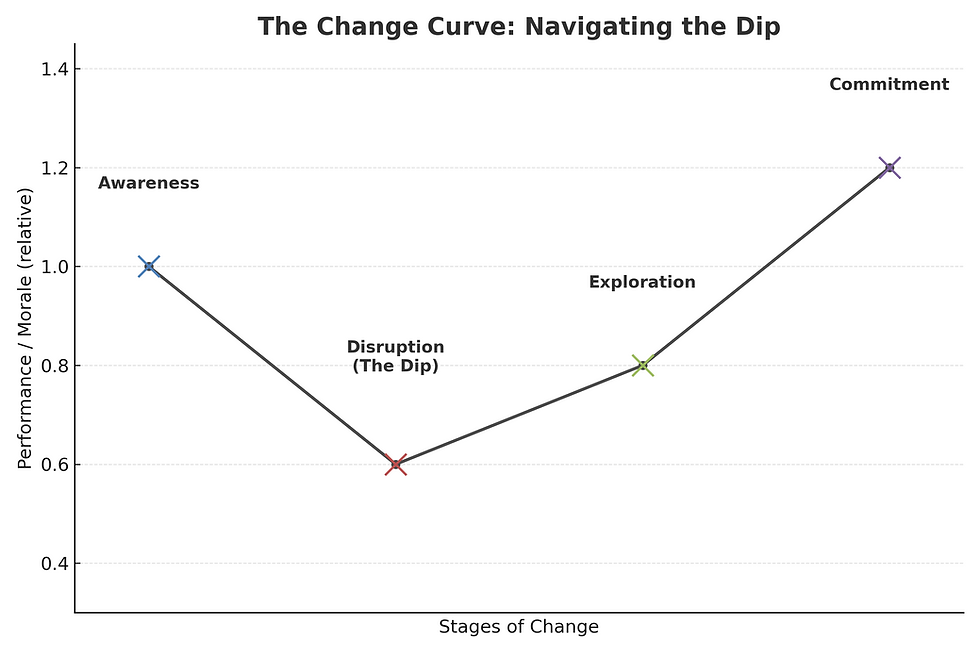Building Financial Resilience: Preparing for Unpredictable Economic Changes
- Amber Parker
- Mar 22
- 4 min read
Economic uncertainty is an ever-present challenge for nonprofits, making financial resilience essential for long-term sustainability. Whether facing a recession, funding cuts, or unexpected expenses, organizations must be proactive in planning for revenue gaps and building reserves to weather financial downturns. Here’s how your nonprofit can assess its financial health and diversify its revenue streams to strengthen resilience.
Assessing Your Financial State
Before making strategic financial decisions, evaluating your nonprofit’s current financial position is crucial. Consider the following:
Identify Weaknesses – Review cash flow trends, reliance on single funding sources, and any budget deficits. Are you overly dependent on grants? Do you have a strong donor retention rate? Identifying financial vulnerabilities is the first step toward mitigation.
Spot Opportunities – Consider untapped funding sources or programs that could generate revenue. Could partnerships with businesses or other nonprofits open new funding avenues? Look for areas to enhance efficiency and increase income.
Review Reserves – A healthy reserve fund is critical for financial stability. Best practices suggest nonprofits maintain at least three to six months of operating expenses in reserves. If your reserves are lacking, developing a strategic plan to build them should be a priority.
Diversifying Revenue Streams
Diversity is always a good thing and definitely crucial in your funding portfolio. To mitigate financial instability, nonprofits should explore multiple revenue sources. This requires creativity and the minds of your staff and board to help see past what you may consider a barrier or impossibility. It can be hard to break out of your current funding mindset, so make sure to leverage the ideas and expertise of others. Here are some options to consider:
1. Grants and Government Funding
Grants from foundations, corporations, and government entities are essential funding sources. However, they often come with restrictions and require renewal. Diversifying grant applications and ensuring compliance with reporting requirements can help maintain this funding stream.
2. Individual Donations
A strong base of individual donors provides stability, particularly if you focus on donor retention and stewardship. Recurring giving programs, memberships, major donor cultivation, and peer-to-peer fundraising campaigns can strengthen individual contributions. Donors should represent a diverse audience and giving level. While big gifts are important and exciting, don’t forget the mid to low level donors, which should make up the foundation of your giving pyramid.
3. Earned Income
If you have the ability to generate revenue through fee-for-service models, membership programs, or selling products or services, you should. Consider whether your organization can offer training, consulting, or merchandise aligned with your mission.
4. Corporate Sponsorships and Partnerships
Businesses often seek to align with nonprofits for community engagement. Developing meaningful corporate partnerships can provide sponsorships, in-kind donations, or employee volunteerism that offsets operational costs. Consider a variety of ways corporations can engage with your organization. Examples include sponsoring events and galas, providing scholarships to cover the cost of free or reduced-fee programs, sponsoring trails/areas of a garden/vehicles (with their logo displayed), etc.
5. Endowments and Investment Income
If your nonprofit has substantial financial reserves, investing a portion in an endowment can generate ongoing revenue. Establishing an endowment requires careful planning but provides long-term financial security. Do you have a planned giving program? If not, consider it. Planned gifts/bequeaths are a great way to start and grow your endowment.
6. Planned Giving
Encouraging legacy gifts through bequests, charitable gift annuities, or donor-advised funds can create sustainable funding. A planned giving program ensures long-term donor commitment to your mission.
7. Fundraising Events
Galas, auctions, walk-a-thons, and other fundraising events bring in revenue while strengthening community engagement. Hybrid or virtual event models can expand reach and participation. However, be careful that you don’t spend more staff time and resources creating a gala event than it brings in. Events are helpful, but they require large amounts of time that pull your focus from your mission, so stick with one or two a year and spend more time cultivating individual and corporate donors.
Creating a Financial Contingency Plan
In addition to diversifying revenue, nonprofits should establish a financial contingency plan, which includes:
Scenario Planning – Outline financial action plans for best-case, moderate, and worst-case scenarios. Discuss these with your leadership team and board of directors. Make sure everyone is on the same page regarding potential future issues and how you will mitigate them.
Expense Prioritization – Identify essential versus non-essential costs and areas where spending can be reduced if needed. I recommend a full organizational audit of existing resources and materials, programs and their costs, potential emergency costs (how’s that HVAC unit?), and where changes or reductions can be made that don’t overly affect them mission.
Emergency Fund Strategies – Set policies on how and when to use reserves and replenish them after use.
Economic uncertainty is inevitable, but financial resilience is within your nonprofit’s control. By assessing financial health, diversifying revenue streams, and creating a solid contingency plan, your organization can better withstand financial challenges and continue serving its mission effectively. Proactive planning today ensures stability and sustainability for the future.
If your organization is facing financial hardship or needs help with creating a resilient financial plan, RootSpark Consulting is here to help. We specialize in guiding nonprofits through financial planning, ensuring they emerge stronger and more resilient.
Let’s work together to make your organization strong.




Comments